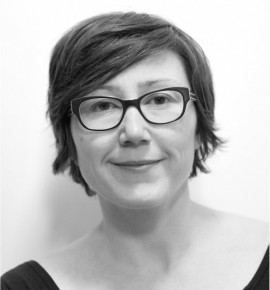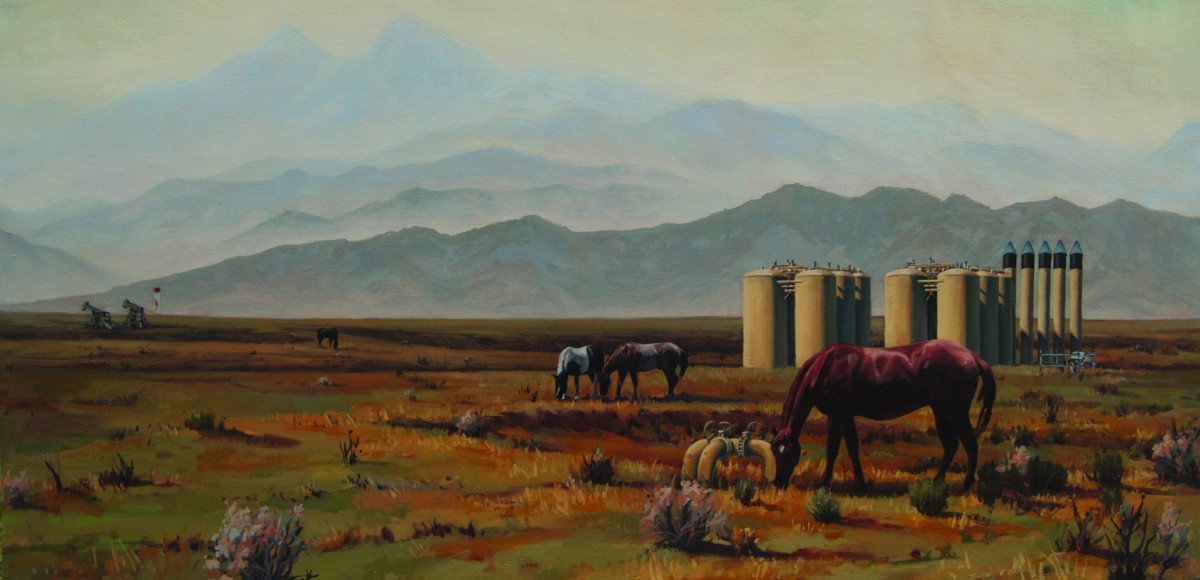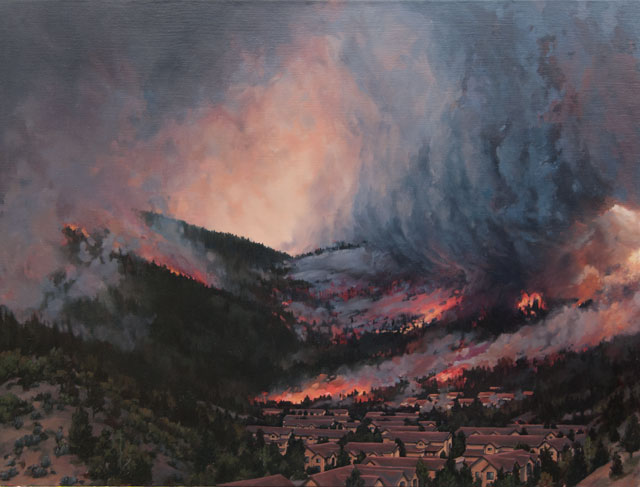Sustainability Education through Art
As appearing in SOURCE

Erika Osborne, associate professor in CSU’s Department of Art and Art History, received a $6,000 fellowship last year from the School of Global Environmental Sustainability to promote sustainability through art.
Osborne creates works that raise awareness of environmental issues in the American West. The support she received helped add to her “Re-Manifesting Destiny” series with two paintings that address climate change and the urban-wilderness interface.

Q: Focusing on sustainability through art is an unusual — and interesting — career option. How did you end up in this career?
A: I was lucky enough to study at the University of New Mexico, where I participated in two amazing field programs for artists — Land Arts of the American West and Wilderness Studio. Both courses dealt with being an artist of “place,” and both courses required significant amounts of time out of doors, in the field. I went on to teach both of those courses and then developed similar programming at West Virginia University and at Colorado State University. It’s impossible to engage “place” without looking at environmental degradation and hoping for a sustainable future. My work has stemmed from the need to communicate these things.
Q: How do you describe the field of “environmental art”?
A: The environment has come to the forefront in political, social and economic dialogues, and it is important to acknowledge the role it plays in the arts. Artists have stepped outside of their areas of expertise and have begun to collaborate with scientists, architects and designers. The work is displayed both in and outside museums or galleries.
Q: What made you decide to apply to the SoGES Resident Fellows program?
A: SoGES is one of the reasons I accepted a faculty position at CSU. For the past 10 years, I have been dedicated to creating work about the environment and to teaching courses that get students to engage the environment as part of their studio practice. I was impressed with the support that SoGES had from the University at large, and it truly seemed like it provided a structure for interdisciplinary collaboration and research. Once I got to Fort Collins and began working at CSU, I introduced myself to the SoGES crew and from there was turned on to their fellowships. I was the first SoGES fellow from the Art and Art History Department.

Q: In reading about your work, it seems as if you approach your painting in the way that a reporter sits down to write an article. What do you think of that parallel?
A: That’s a fair comparison. Like a reporter, I research, gather information and spend time on location, gathering the “ground truth” for the story I want to tell. I then try to frame it in a way that makes sense and is compelling — just like a good reporter would.
Q: What do you hope the impact of your work will be?
A: I hope that my work inspires people to consider their place in the world in a real way. We love and abuse our environment simultaneously. I want my work to reflect that. Nothing is black and white. Everything is nuanced. If we can tune into this, then perhaps we can come up with real solutions to our environmental problems.
Q: How can we see your art?
A: I am represented by Robischon Gallery in Denver, so my work can always be seen there. I also currently have a bunch of paintings traveling around Pennsylvania — Philadelphia and Pittsburgh — in a show called The Mountain and the Bumblebee. In addition, I’ll be doing a residency at Sagehen Creek Field Station, a UC Berkley research site, in the summer — another venue for exploring the intersection of art, science, culture and history.
